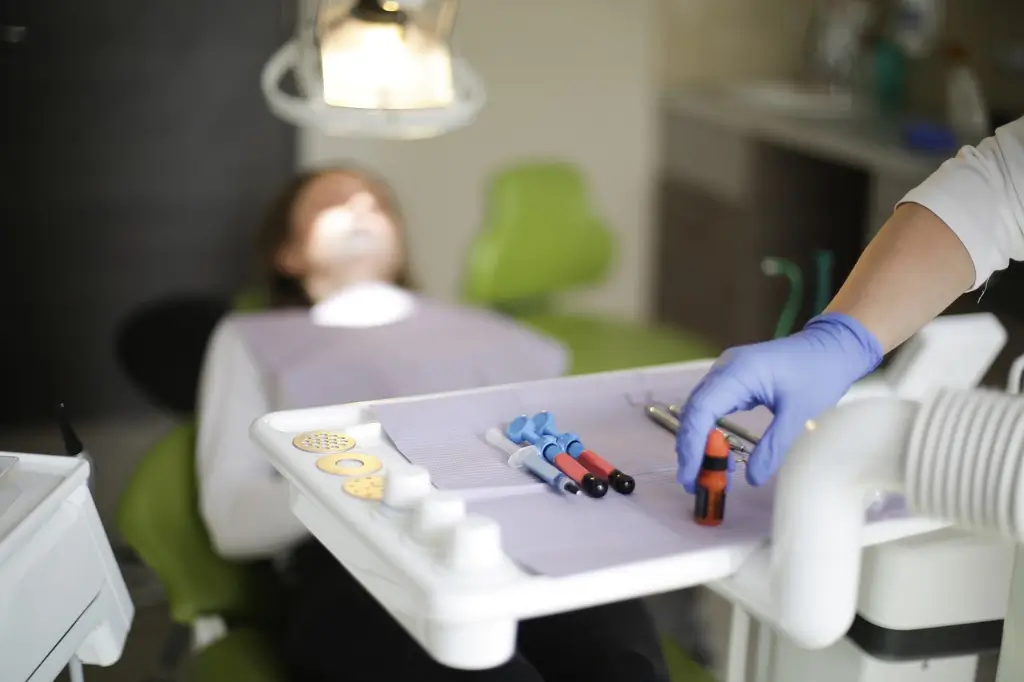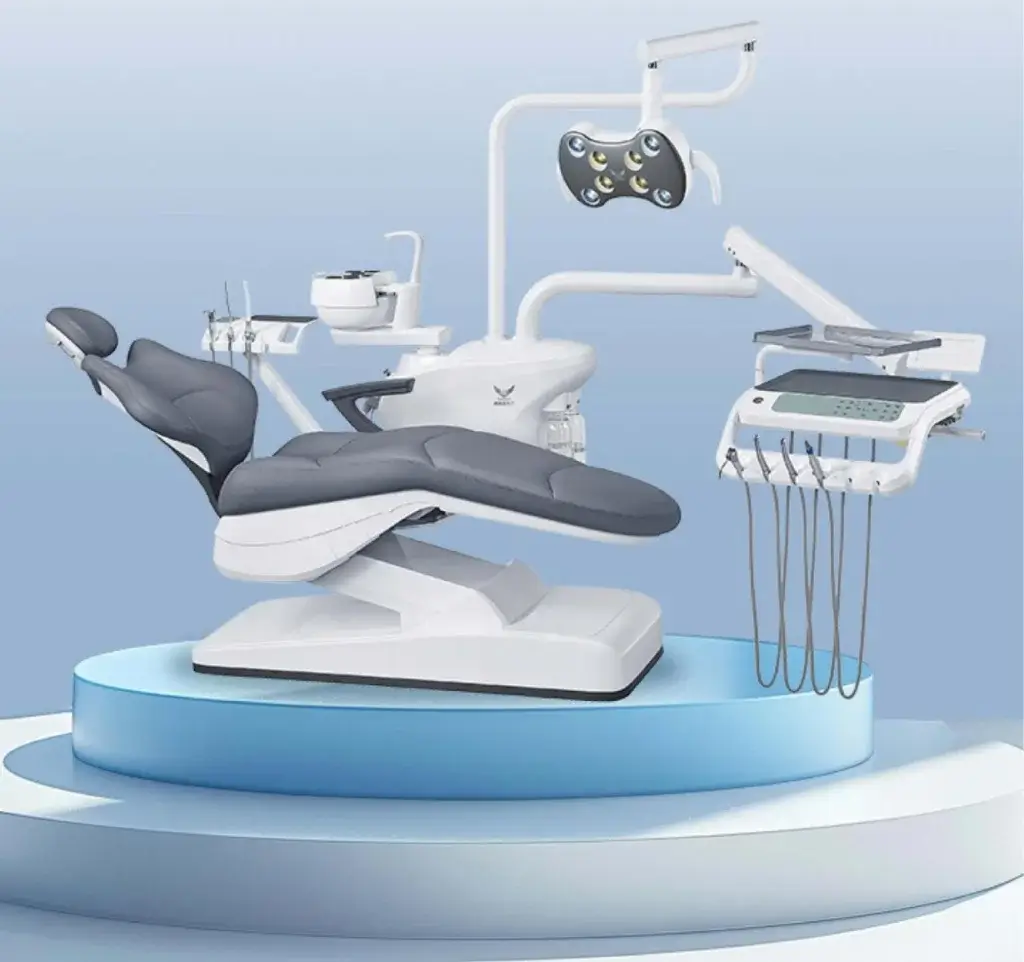
Every dental professional feels that quiet unease lurking in the back of their mind: cross infection. Treating one patient after another, using the same waterlines, suction tubes, and handpieces, carries hidden dangers. Even with strict hygiene measures, bacteria can stick around in pipes, forming stubborn biofilms that resist standard cleaning. This is where cutting edge dental units with built in sterilization systems make a difference. They turn infection control from a constant concern into a straightforward routine.
In this article, we’ll explore how automatic pulse line sterilization and disinfectant compatible systems built into modern dental chairs reduce infection risk, protect patients, and simplify daily workflows.
Cross infection in dental clinics doesn’t happen overnight. It builds up quietly in waterlines, handpieces, and suction circuits. Studies have shown that biofilm, a sticky layer of bacteria, forms inside narrow tubes after only a few hours of water stagnation. Once established, it’s extremely difficult to remove.
Patients may not notice it, but the risk is real:
Bacteria transfer between patients during suction or spraying.
Contaminated waterlines releasing harmful microbes into the oral cavity.
Handpiece backflow carrying saliva and blood back into tubing.
In a busy clinic, the margin for error is thin. Without built in disinfection systems, staff are forced to rely on time consuming manual cleaning.
Automatic pulse line sterilization is a technology integrated into advanced dental units. Instead of continuous flow cleaning, it uses intermittent pulsed delivery of disinfectant through internal pipelines. This pulsing action disrupts biofilm formation and allows disinfectant to reach hidden areas that standard flushing often misses.
One click activation by the dentist or assistant.
Disinfectant solution enters the waterline and suction circuits.
Pulsed cycles alternate between water and disinfectant, loosening debris and bacteria.
Complete rinse ensures the chair is safe for the next patient.
Efficiency: Entire system disinfected in minutes, not hours.
Consistency: No skipped steps or human error.
Safety: Eliminates up to 99% of bacteria inside dental pipelines.
Imagine finishing a long root canal appointment. Instead of spending 20 minutes manually flushing lines, the unit’s one click system sterilizes everything while you prepare notes. It’s a practical time saver.
Handpieces and suction circuits are particularly tricky. High speed turbines create backflow, saliva and blood can travel several centimeters into the tubing. Suction hoses, meanwhile, deal with continuous exposure to fluids that often contain bacteria and viruses.
Advanced dental units are now designed with disinfectant compatible circuits:
Handpiece sterilization channels that withstand disinfectant flow without damaging internal components.
Dual-bottle systems allowing a switch between distilled water and disinfectant solutions instantly.
High and low suction sterilization at the press of a button.
This means every component in contact with a patient’s mouth is regularly sterilized, not just wiped down.
The advanced dental unit, such as the GD-S800, offers significant improvements over traditional dental units. Unlike traditional units that rely on manual, time consuming waterline flushing, the advanced unit features automatic pulse sterilization with a one click operation. While traditional units typically clean only the external suction circuit, the advanced unit incorporates internal disinfectant circulation for thorough cleaning.
Handpiece sterilization in traditional units requires an external autoclave, whereas the advanced unit has integrated disinfectant channels. These advancements significantly reduce the risk of cross infection compared to the moderate to high risk in traditional units. Additionally, the advanced unit lightens staff workload by automating cleaning processes, making them more efficient compared to the heavy manual cleaning required by traditional units.
This table makes it clear: moving to an advanced system is not just about hygiene, it’s about running a more efficient clinic.

Patients often notice whether equipment looks modern and hygienic. A dental chair with visible sterilization features builds trust: “If they care this much about cleanliness, I know I’m in safe hands.”
With one click sterilization, staff can prepare the unit for the next patient in minutes. This shortens waiting times, a point patients really appreciate.
Cleaner waterlines and suction mean fewer post treatment infections or complications. It’s not something patients often think about, but it improves their recovery experience.
Picture a small urban dental clinic with four chairs. By mid morning, three fillings, one extraction, and a child’s cleaning have already been completed. Normally, assistants would be juggling disinfectant bottles, manually flushing waterlines, and checking suction hoses.
With advanced units:
Each chair undergoes automatic pulse sterilization in under 5 minutes.
Suction hoses are flushed with disinfectant via the built-in dual-bottle system.
Dentists focus on patient care instead of supervising sanitation.
It’s not just convenient, it’s a safer workflow that makes the clinic more professional in the eyes of patients.
Foshan Gladent Medical Equipment Co., Ltd. is a trusted manufacturer focused on the design and production of advanced dental units. With years of industry experience, the company has built a reputation for combining ergonomic design with reliable sterilization technology. Gladent also offers customization services to meet different clinic needs.
Their philosophy is simple: a dental chair should protect health, enhance workflow, and make both dentist and patient comfortable.
Cross-infection remains one of the most pressing challenges in modern dentistry. While no system can replace careful hygiene practices, advanced dental units give clinics a powerful ally. Automatic pulse line sterilization, disinfectant compatible circuits, and dual bottle water systems aren’t just “extra features”, they’re becoming essential tools for safe, efficient, and patient friendly dentistry.
For clinics planning their next equipment upgrade, choosing a unit with built in sterilization features is not only a smart decision but also a responsible one. Patients deserve nothing less.
Q1: How do advanced dental units help prevent cross-infection in clinics?
They use automatic pulse line sterilization and disinfectant compatible circuits for handpieces and suction, eliminating bacteria inside pipelines.
Q2: Do I still need to autoclave handpieces if my unit has disinfectant flushing?
Yes. Integrated flushing reduces contamination, but handpieces must still be autoclaved for complete sterilization.
Q3: What is the benefit of a dual-bottle water system?
It lets you switch between distilled water and disinfectant with one click, making daily disinfection fast and reliable.
Q4: Are advanced dental units worth the investment for small clinics?
Absolutely. While the upfront cost is higher, the time saved and the reduction in infection risks quickly balance the expense.
Q5: How often should the automatic sterilization system be used?
Most clinics activate it between patients and run a deeper cycle at the end of the day. Usage frequency depends on patient volume.